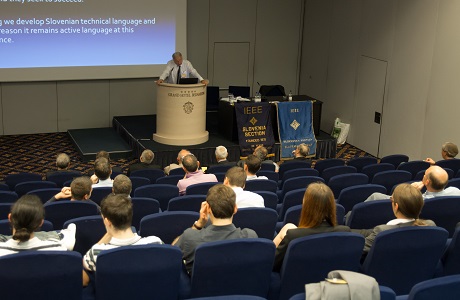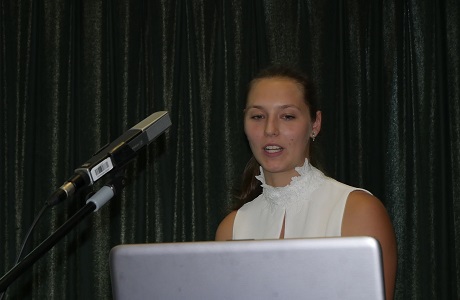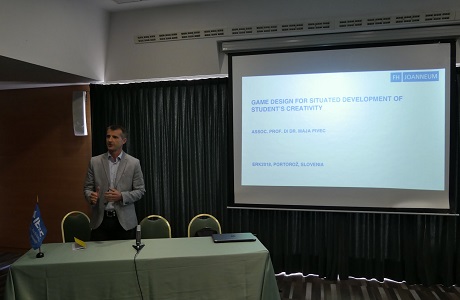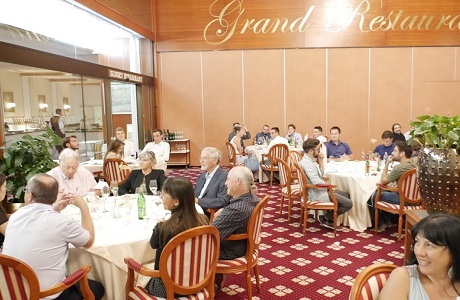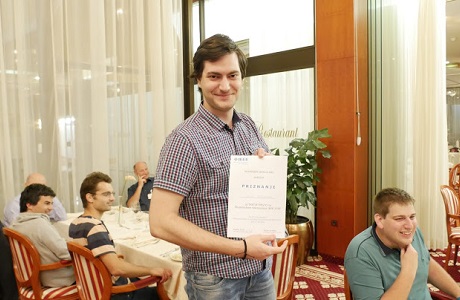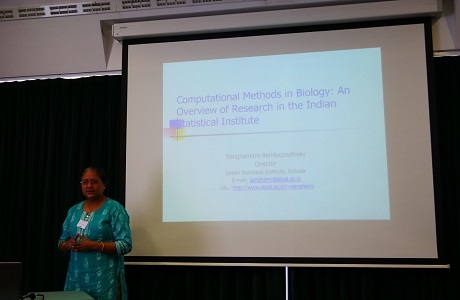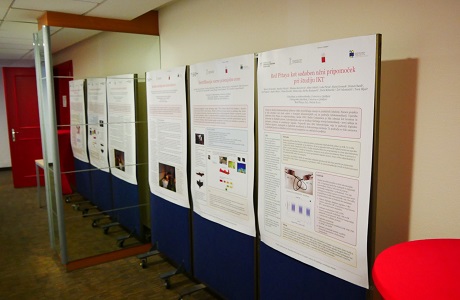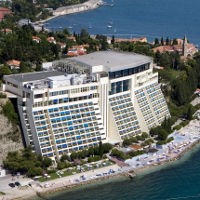Call for papers: 32th International Electrotechnical and Computer Science Conference ERK 2023
The ERK 2023 conference will be held on September 28-29, 2023 in Congress Center Bernardin, Portorož, Slovenia. The conference is organized by the IEEE Slovenia Section together with Faculty of Electrical Engineering University of Ljubljana and other Slovenian professional societies. The Conference is bilingual, with presentations in English and Slovenian.
| VP - Invited Lectures | CS - Computer Science |
| EL - Electronics | PR - Pattern Recognition |
| TC - Telecommunications | BM - Biomedical Engineering |
| AR - Automatic Control and Robotics | MM - Multimedia |
| SM - Modeling and Simulation | DI - Didactics |
| ME - Power Engineering | ST - Student Papers |
| MT - Measurement | AE - Acoustics and Electroacoustics |
Author info:
- Paper submission extended to: 27. July 2023
- Notification of acceptance: 23. August 2023
- Camera-ready: 4. September 2023
Vabilo na dvaintrideseto mednarodno Elektrotehniško in računalniško konferenco ERK 2023
Konferenca bo potekala v kongresnem centru Bernardin v Portorožu. Na konferenci bo od 28. do 29. septembra 2023 poleg rednih sekcij bogat vzporedni strokovni program v dveh dneh, zato Vas vzpodbujamo, da si vzamete čas in se v tej atmosferi informirate in pogovorite o novostih, trendih in možnosti razvoja naše stroke na specifičnih področjih, za katere in od katerih živite. Vabljena, pregledna in poučna predavanja bodo dopolnjevala osnovni program konference, kjer bodo raziskovalci poročali o svojih dosežkih pred kritičnim strokovnim forumom udeležencev. Delovna jezika sta slovenski, ker se negovanju slovenske tehniške besede ne moremo odpovedati, in angleški, s čimer vabimo vedno več udeležencev iz tujine. Na konferenci bodo zastopana naslednja področja:
|
|
Konferenco organizira Slovenska sekcija IEEE v sodelovanju s Fakulteto za elektrotehniko Univerze v Ljubljani in drugimi strokovnimi društvi. Članek naj obsega 4 strani in je napisan v slovenščini ali angleščini, vendar od avtorjem pričakujemo, da bodo v istem jeziku članek predstavili tudi na konferenci!
Študente SB Ljubljana in SB Maribor vabimo na tekmovanje študentskih prispevkov 2023 Slovenske sekcije IEEE.
Urnik / Schedule

Spremljajoči dogodki
Četrtek / Thursday 28.9.2023
- 9h v D (DD1) Letno srečanje odbora IEEE CIS/ IEEE CIS Meeting
- 11h in 14h v C Študentsko tekmovanje / Student Competition (IEEE SB)
- 16h30 v/in A Vabljena predavanja / Invited Lectures
Jernej Hribar
Institut "Jožef Stefan", Ljubljana, Slovenia
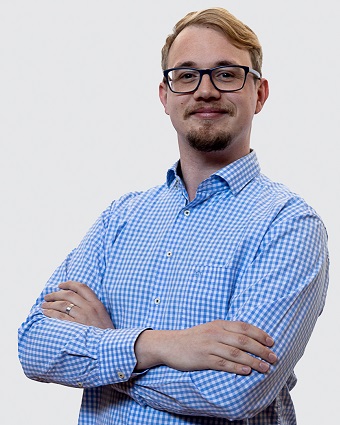
On Freshness of Information in Future Networks and Intelligent Systems
Dr. Jernej Hribar joined the Department of Communication Systems at the Jožef Stefan Institute, Slovenia as a Marie Skłodowska-Curie Action Fellow in October 2022. From 2020-2022, he was a postdoctoral researcher in the CONNECT Centre for Future Networks and Communications at Trinity College Dublin, Ireland. He received an undergraduate degree in electrical engineering from the University of Ljubljana, Slovenia, in 2014 and a Ph.D. from Trinity College Dublin, Ireland, in 2020. His research interests include Age of Information, reinforcement learning, and smart infrastructure.
Abstract. The combination of tactile internet and machine to machine communications has facilitated a wide range of low latency cyber cyber-physical applications, including fleet management, virtualvirtual/augmented reality (VR/AR), and industrial automation, among many others. These applications typicall y rely on a constant flow of new information, such as measurements captured by numerous sensors within the system, to support makmaking informed decisions. While the latency of these messages is typically in the order of a few milliseconds, the latency itself often fails to provide an insight into the relevance of the information for the decision making process of these applications. To a ddress this concern, a novel metric known as the 'Age of Information' (AoI) has emerged, aiming to measure the freshness of data. The AoI is defined as the time elapsed since the latest useful piece of information reached its intended destination, generate d at its source (e.g., a sensor). Moreover, AoI is closely tied to the significance of collected data in real time applications. The underlying assumption is that the more recent the information was generated, the greater its importance in influencing the decision making process of these applications. This contrasts with latency, which merely measures the time taken for data to travel from source to destination. As such, AoI metric is emerging as a valuable tool in future networks for evaluating the freshne ss and significance of data in various in real time applications.
In this lecture, we will discuss the origin of the AoI metric, how it is measured, and what its impact will be on future networks and intelligent systems. We will also demonstrate, using a system of multiple sensors, how to design a smart Medium Access Control (MAC) scheme capable of minimizing AoI within the system.
Johannes Sturm
Carinthia University of Applied Sciences, Villach, Austria

Integrated Electronic Systems – Status Quo and Future
Johannes Sturm received the M.Sc.degree in physics from the Graz University of Technology in 1995 and the Ph.D. degree from the Vienna University of Technology in 2006. In 1996, he joined the Siemens Semiconductor Group and later Infineon Technologies, Villach, Austria, working on analog, mixed-signal ASIC projects in the field of optical sensor ICs and highspeed CMOS circuits. Since 2006, he has been a Professor of analog circuit design with the Carinthia University of Applied Sciences, Villach. He holds seven patents in the field of microelectronics. His research interests are in the field of CMOS RF integrated circuits and integrated sensor design.
Abstract. The miniaturization of electronic systems is a global challenge that we have been facing since the dramatic increase in mobile communications and consumer electronics as an integral part of our daily lives. Integration of electronic systems takes place at different levels. A System-on-Module (SoM) integration includes the core components of an embedded system such as microprocessors, communication interfaces and memory blocks on a single printed circuit board (PCB). The next level of integration is System-in-Package (SiP), where complex electronic systems are combined in a single electronic package, reducing the form factor by at least one order of magnitude. The highest integration density is achieved with System-on-Chip (SoC) technologies. The enormous complexity of modern SoCs with tens of billions of transistors, as well as the immense cost of modern semiconductor fabs requires high innovation in new semiconductor technologies and their manufacturing processes, as well as in the EDA design environment, modelling and verification methodology.
The presentation will give an introduction to SiP and SoC integration technologies and analyze their specific challenges, strengths and weaknesses. Different research examples of SoC and SiP integration in the area of integrated sensors and mobile communication will be presented. Furthermore, the situation of chip manufacturing and SoC development in Europe will be discussed. The strong competition from the Asian and US semiconductor industry is a challenge that Europe will have to face in the future. The "European Chip Act" is intended to strengthen Europe's international competitiveness in this field.
Rok Hren
Faculty of Mathematics and Physics, University of Ljubljana, Slovenia
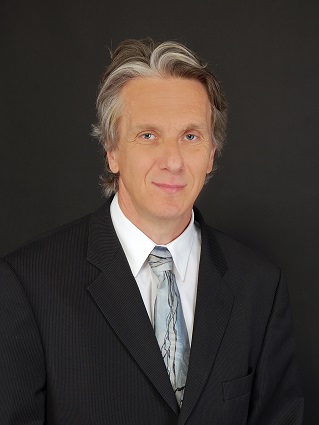
Quantifying perfusion changes in clinical oncology applications using hyperspectral imaging
Rok Hren, PhD, MSc IHP (HE) is currently at the Faculty of Mathematics and Physics, University of Ljubljana, Slovenia and Institute of Mathematics, Physics, and Mechanics, Slovenia. He received his PhD in Physiology and Biophysics and MSc in Physics from Dalhousie University, Canada and an MSc in International Health Policy (Health Economics) with Distinction from London School of Economics and Political Science, UK; he was a post-doctoral Fellow at Nora Eccles Harrison Cardiovascular Research and Training Institute, University of Utah Medical School, USA. His research interests include medical optics, health economics and quantitative electrocardiography. In total, his publications gathered 536/639 citations (excluding self-citations) in WoS/Scopus databases (as of July 19, 2023).
Abstract. Hyperspectral imaging (HSI) is an imaging technique that holds significant potential in various clinical applications due to its ability to gather valuable information about perfusion using visible light. The distinct advantage of HSI is that it is non-contact, non-ionizing, and non-invasive, while also eliminating the need for contrast agents. In medical practices, HSI has shown promise in detecting different types of carcinoma and assessing perfusion in healing processes like transplants and wounds. As perfusion of tumors is also a crucial factor in oncology, we reviewed the usefulness of HSI in quantifying perfusion changes during clinical interventions in oncology. Specifically, we focused on neoplasms in anatomical locations such as the kidneys, breasts, eyes, brain, and gastrointestinal (GI) tract. We have demonstrated that HSI exhibits great potential as an imaging technique in the clinical oncology setting with the assessment of mastectomy skin flaps perfusion after the breast reconstructive surgery and anastomotic perfusion during reconstruction of gastrointenstinal conduit as particularly promising.
Otvoritev / Opening
- 19h Zdravica ob otvoritvi / Opening ceremony toast
- 20h Restaurant GH Bernardin Konferenčna večerja / Conference Dinner
Petek / Friday 29.9.2023
- 9h30-12h30 v E (DD2) Delavnica Uporabljamo superračunalnike! (UL FRI, član konzorcija SLING)
- Registracija na: indico.ijs.si/event/1752/
- 12h Taverna Mediteran Kosilo / Lunch
